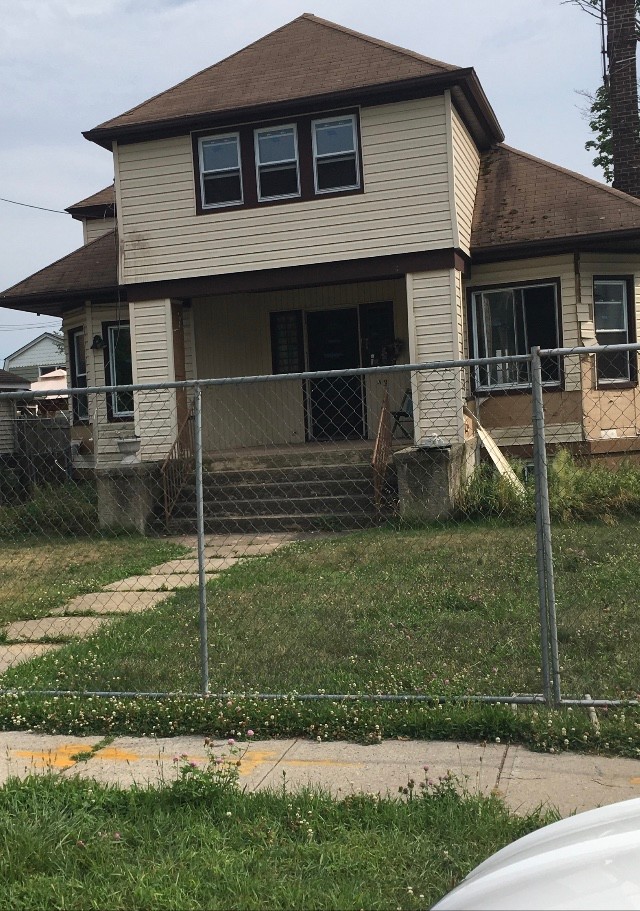East Rockaway Sandy victims set to return home at last, six years later
Six years after Hurricane Sandy and four moves later, Phyllis Boland is finally preparing for the one move she’s longed for: She’s going back home.
“It’s a wonderful feeling to finally get back in a home, even if it’s not the one that I owned,” Boland said. “It’s been a very difficult and long journey to get where I am now.”
Boland’s home was uninhabitable after Sandy. She spent six years filling out the paperwork and fulfilling all the necessary steps to have her house on Adams Street in East Rockaway elevated and rebuilt. It is now nearly complete, and work should be finished by the end of next month. She said she hopes to move in sometime between Thanksgiving and Christmas.
In the past six years, Boland, her son, Andrew, and her daughter, Ashley, moved four times. Boland said they stayed with a family member for three weeks in the initial aftermath of the hurricane. They spent the next 11 months in a hotel, and then rented a house on Lawrence Street in the village. They also lived in Oceanside before returning to East Rockaway and renting their current home on Dart Street, blocks from where their Adams Street home has stood vacant since the storm. Boland said she envisioned living on Dart Street only temporarily, but it has been home for more than two years.
She said that the constant displacement was even harder because Andrew, who turns 27 next month, has Landau-Kleffner syndrome, a disorder that includes the gradual or sudden loss of the ability to understand and use the spoken language. He was diagnosed at an early age and has had seizures throughout his life, so he often must wear a helmet.
“I’m hoping for as smooth a transition as possible for Andrew, and I know it’s going to be difficult for him,” she said. “Change is difficult for everyone, but it will be more difficult for him because he doesn’t understand.”
Though returning home is all Boland wanted, it came at a cost. She said she was simultaneously paying a mortgage on a home she couldn’t live in while paying rent for the house on Dart Street. She said she has spent more than $150,000 on rent, and had to refinance her mortgage through the Home Affordable Modification Program, which reduces monthly payments for homeowners who are struggling to pay their mortgages.
Boland also relied on the Interim Mortgage Assistance Program, which is funded by the U.S. Department of Housing and Urban Development through an agreement with the state. It enabled Sandy-displaced homeowners to pay less toward their mortgages if they were also paying rent. But property taxes, insurance, penalties and fees while she awaited approval for IMA led Wells Fargo to levy an additional $167,000 on Boland’s home and extend her mortgage by 32 years.
While she said she was grateful to be moving back home, she noted that the house will not be the same. It has been raised 12 feet and looks different than her former home.
“I’m definitely blessed it’s happening,” she said, “but it came at a big price.”
After Sandy, Boland waited for funds from NY Rising to rebuild. Eventually, the Governor’s Office of Storm Recovery said the home could be rebuilt once she was approved for the IMA program. After paperwork delayed her approval, Boland said, it took many months for East Rockaway village officials to approve the plans for her home.
Because of delays with NY Rising, the IMA program, scheduled for 20 months with a cap of $3,000 per month, or $60,000 total, was extended to 36 months for homeowners in February 2016. It had previously been extended from three months to 20 in 2013. The 16-month extension, however, was waived as of Jan. 1, 2018. Though she applied for the IMA program in early 2016, Boland was not approved until August 2017. At that point, she was told, based on the IMA department’s calculations, that she was eligible for only 14 months of mortgage reimbursement, and the program was set to expire June 1.
In December 2017, State Sen. Todd Kaminsky and U.S. Rep. Kathleen Rice wrote to HUD, urging the agency not to end the program while homeowners like Boland were struggling. The program will expire for all homeowners at the end of the year.
Boland said she hopes that lessons were learned in Sandy’s aftermath, and that no one will have to face similar obstacles in the wake of future storms. “There are repercussions to being a victim,” she said. “It’s losing much more than just items. There’s an emotional price. There’s a financial price. But there are echoes that go beyond, and I think it’s very difficult. . . . I think it should have been handled better for the victims.”
Boland said she hopes to host a celebration and put the grief behind her when she is back home. “I’m just looking forward,” she said. “I try not to look behind me much. I’ve been through a lot, but I’m looking ahead.”

 55.0°,
Overcast
55.0°,
Overcast 







